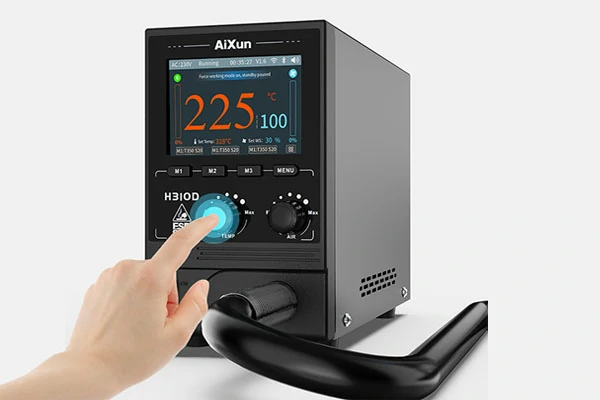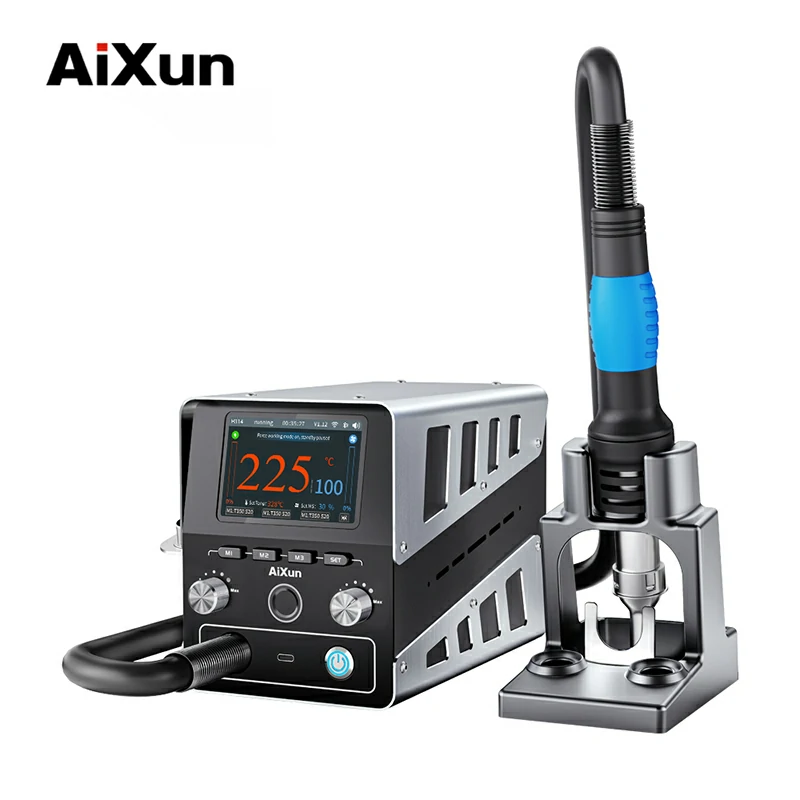In the world of electronics, precision and accuracy are key, especially when working with PCBs (Printed Circuit Boards). BGA (Ball Grid Array) and SMD (Surface Mount Device) rework stations are essential tools for reworking, repairing, or replacing these components. But what exactly are these stations, and how are they different from regular soldering stations? Let's break it down in simple terms.

What is a SMD BGA Rework Station?
Think of a SMD and BGA rework station as a specialized tool designed for working with tiny, delicate components on circuit boards. These components have small soldered connections, so they need a high level of control and accuracy during the rework process. Rework stations provide the tools and features needed for this precise work.
Key Differences from Regular Soldering Stations:
- Temperature Control: BGA and SMD rework stations have precise temperature control, allowing you to create and follow specific temperature profiles for each component. This is important to avoid damage and ensure a successful rework. Regular soldering stations typically have fixed temperature settings, which may not be suitable for delicate BGA and SMD work.
- Focused Heat: BGA and SMD rework stations use specialized nozzles or hot air tools to concentrate heat directly on the component being reworked. This prevents nearby components from overheating or being damaged. Regular soldering irons provide a more general heat source, which can be challenging when working with densely populated PCBs.
- Component Handling: Many rework stations have adjustable platforms or holders to securely hold the PCB and ensure proper alignment during rework. This is crucial for accuracy. Traditional soldering stations lack these specialized fixtures, making it difficult to precisely align and handle BGA and SMD components.
- Versatility vs. Specialization: BGA and SMD rework stations are specifically designed for working with these components, offering a high level of specialization. Regular soldering stations are more versatile and can be used for various soldering tasks, but they may lack the precision required for BGA and SMD work.
Why BGA Rework is Difficult:
- Tiny Balls: BGAs have super-small solder balls, making them easy to fumble with.
- Hidden Joints: Unlike regular components, BGAs hide their solder joints, requiring special tools for inspection.
- Heat Sensitivity: BGAs are susceptible to heat damage, demanding precise temperature control during rework.
- Alignment Challenges: Aligning the BGA correctly on the circuit board is crucial to avoid problems.
- Specialized Equipment: BGA rework often requires specialized equipment like rework stations, which may not be readily available to beginners.
- Delicate Components: BGAs are delicate and easily damaged if not handled carefully.

Professional BGA Rework Station Examples
AiXun H314 1400W Smart Hot Air Rework Station
• 3.5" HD display, smart operation system
• WiFi & Bluetooth connectivity, AI voice control
• 1400W heating, 380°C in 3 seconds
• Soft, standard, top speed modes, 45 account sets
• Dual desoldering modes, private cloud data storage
• Patent 3D air nozzle, precise temperature control
• Spring lock air nozzle for easy swapping, even at high temps
High-end rework station provide advanced capabilities. Learn more about soldering&rework station on AiXun official website.


 WhatsApp
WhatsApp